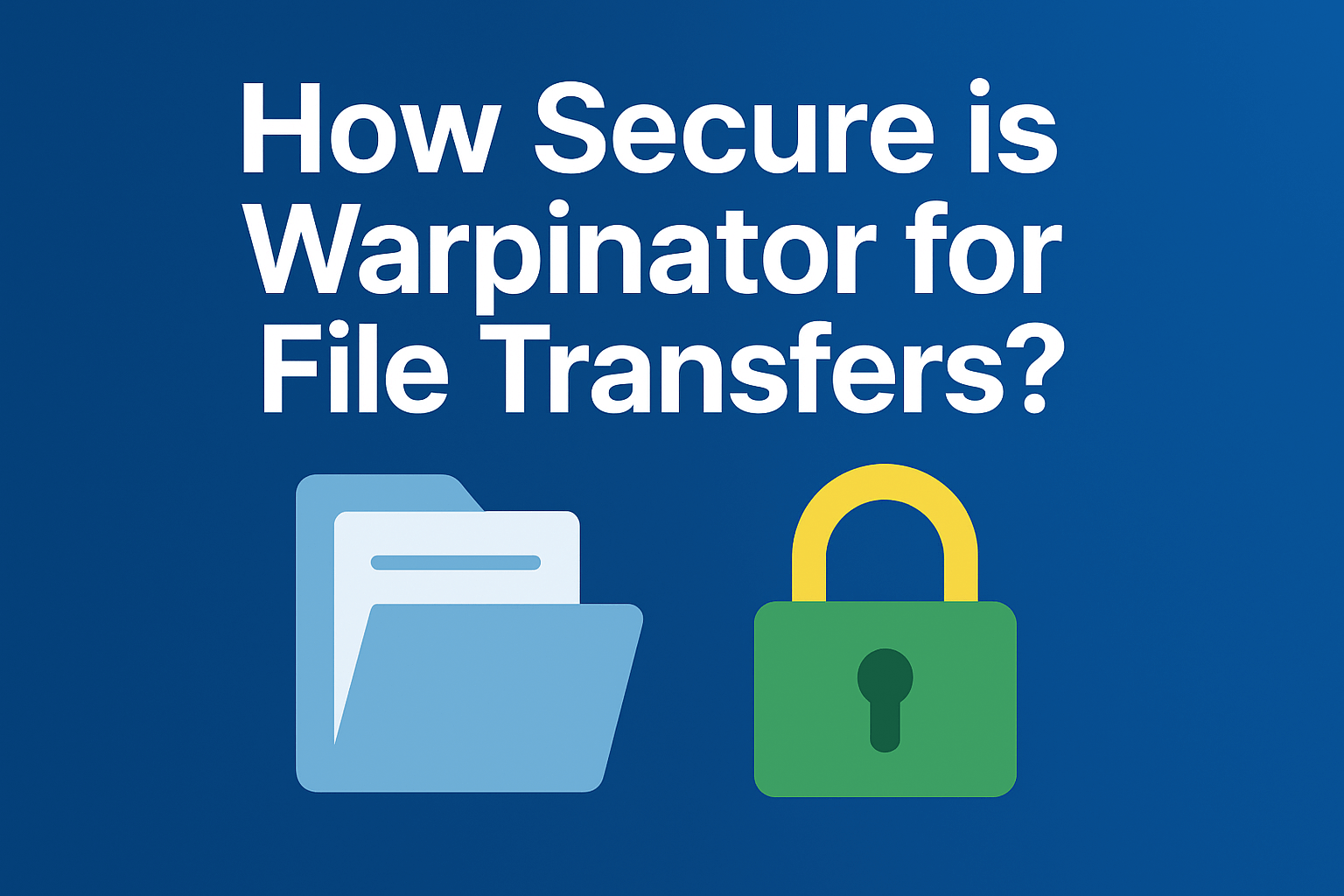Warpinator offers an intuitive way to share files over your local network (LAN)—but how secure is it truly? Let’s dive into the key security features and give you an honest breakdown.
1. End-to-End Encryption
Warpinator encrypts files before sending and decrypts them only upon reaching the recipient, meaning even if intercepted, your data remains unreadable. This offers a solid layer of protection against eavesdropping.
2. Local Network Only—No Cloud Exposure
All transfers stay strictly within your LAN. Warpinator never touches the internet, which drastically reduces attack vectors from external threats.
3. Secure Mode & Group Code Protection
Warpinator uses a group code (default: “Warpinator”) to establish trust between devices. Changing this code to something unique triggers Secure Mode, which:
- Requires manual approval before transfers are accepted
- Disables automatic startup
- Limits session duration
- All of which helps fortify your transfers.
4. Folder Isolation via Landlock or Bubblewrap
Warpinator protects your system’s integrity by isolating the download folder. If supported by your OS:
- Landlock (Linux Kernel security module) isolates file operations.
- If unavailable, it falls back to Bubblewrap sandbox.
- If neither is available, it defaults to a “legacy” mode with reduced isolation.
5. Transparent, Open-Source Code & Regular Updates
Warpinator is open-source, meaning the code is publicly inspectable. This transparency helps the community detect and fix vulnerabilities quickly.
6. Known Past Vulnerabilities & Fixes
- CVE-2022-42725: A path traversal issue allowed malicious senders to overwrite arbitrary files. This has since been fixed.
- CVE-2023-29380: A remote file deletion vulnerability was discovered and addressed in version 1.6.0. Enhancements like folder isolation via Landlock or Bubblewrap were added.
These updates demonstrate active security maintenance and improvement.
Tips to Keep Your Transfers Extra Safe
Even though Warpinator already uses encryption, you can boost security with a few extra steps:
- Use a Trusted Network – Avoid public Wi-Fi. Stick to your home or office LAN.
- Enable Firewalls – Keep your OS firewall active for added protection.
- Limit Devices – Only connect devices you know and trust.
- Keep Warpinator Updated – Updates often patch hidden vulnerabilities.
- Check File Integrity – Verify that received files are complete and unaltered.
Can Hackers Intercept Warpinator Transfers?
Warpinator uses TLS encryption, which makes it very difficult for hackers to intercept your files. The data is scrambled during transfer, so even if someone tries to capture it, they won’t be able to read it.
However, hackers could still try other tricks:
- Gaining access to your LAN – If they connect to your Wi-Fi, they might try to send or receive files.
- Device spoofing – Pretending to be a trusted device.
- Outdated software attacks – Exploiting older, unpatched versions.
That’s why it’s important to use strong Wi-Fi passwords, keep your system updated, and only approve known devices in Warpinator.
Summary Table
| Security Feature | Status | Notes |
|---|---|---|
| Encryption | Yes | End-to-end TLS-based encryption |
| LAN-only transfers | Yes | No cloud or internet exposure |
| Group code & Secure Mode | Yes | Encourages manual code change from default |
| Folder isolation | Yes | Landlock/Bubblewrap based if available |
| Open-source & transparent | Yes | Community-audited, regularly updated |
| Past vulnerabilities (fixed) | Yes | CVEs resolved, features improved |
| Community trust | High | Positive user feedback across forums |
Conclusion
Warpinator offers a simple yet reliable way to share files securely over a local network. While it doesn’t use advanced encryption by default, its LAN-based transfers reduce external risks and make it a safe choice for personal and small-team use. By combining Warpinator with basic network security practices, users can enjoy fast, secure, and hassle-free file sharing without depending on cloud services.
